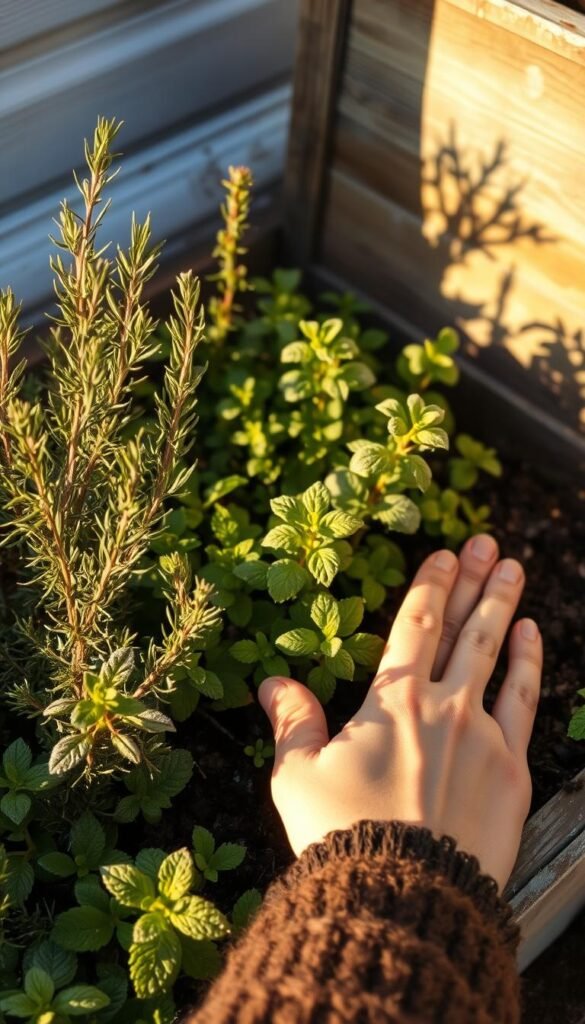Cold weather doesn’t have to spell the end of your flavorful garden additions. With the right approach, you can maintain a vibrant collection of aromatic plants even as temperatures drop. Many varieties thrive in chilly conditions, while others simply need a little extra attention to survive until spring.
Your success starts with knowing your climate. Gardeners in warmer regions, like Houston, often grow sage and oregano outdoors year-round. But if frost or snow visits your area, strategic planning becomes essential. Some resilient plants bounce back stronger after cold exposure, while tender types require shelter indoors.
The secret lies in matching protection methods to each plant’s needs. Hardy options like thyme tolerate frost with proper mulching, while delicate mint might need relocation to a sunny windowsill. Simple techniques—like covering beds or adjusting watering routines—can make all the difference between survival and loss.
This guide will show you how to create personalized care plans for popular varieties. You’ll learn to identify which plants need minimal intervention and which deserve special treatment. With these insights, your garden can continue providing fresh flavors through every season.
Understanding the Basics of Overwintering Your Herbs
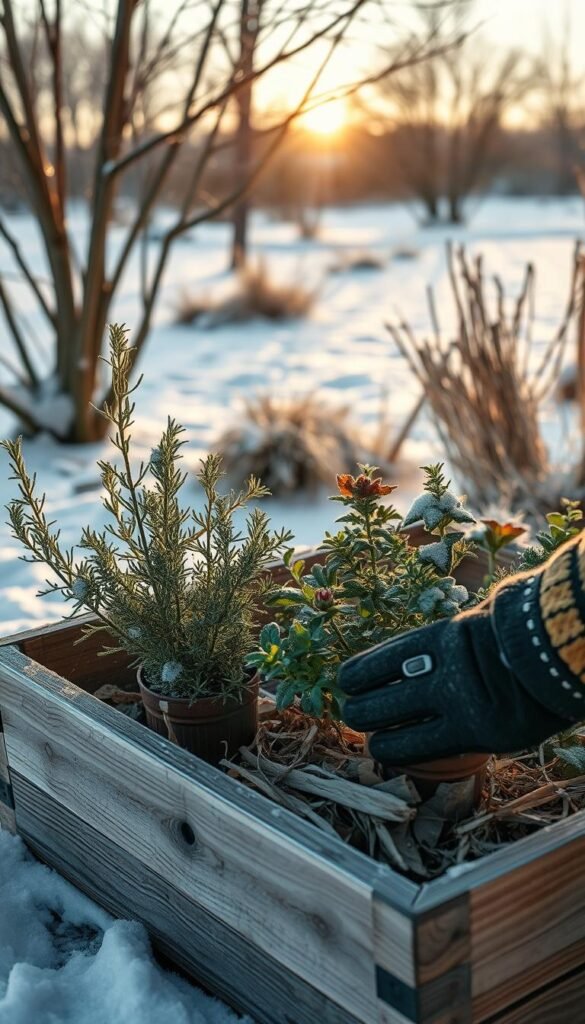
Preparing for colder months ensures your garden remains vibrant year-round. While some varieties handle frost easily, others need tailored strategies to survive until warmer days return. Let’s break down the essentials.
What Is Overwintering?
This practice involves shielding plants during winter’s harshest phases. Perennial herbs like sage often endure cold spells outdoors, while tender types like basil require indoor shelter. It’s not just about survival—it’s about setting the stage for robust spring growth.
Why It Matters for Your Herb Garden
Proper care now means healthier plants later. Established perennials grow more productive each season, unlike annuals that need replanting. Recognizing dormancy signs—like slowed growth—helps you time interventions perfectly.
| Herb Type | Cold Tolerance | Winter Strategy |
|---|---|---|
| Hardy (e.g., Thyme) | Withstands frost | Mulch & outdoor protection |
| Delicate (e.g., Lemon Verbena) | Needs above-freezing temps | Move indoors before first frost |
Seasonal adjustments matter most in zones with unpredictable weather. In areas like North Carolina, rosemary might thrive outdoors, while mint demands container relocation. Matching methods to each plant’s needs maximizes success rates.
Assessing Your Herb Garden and Zones
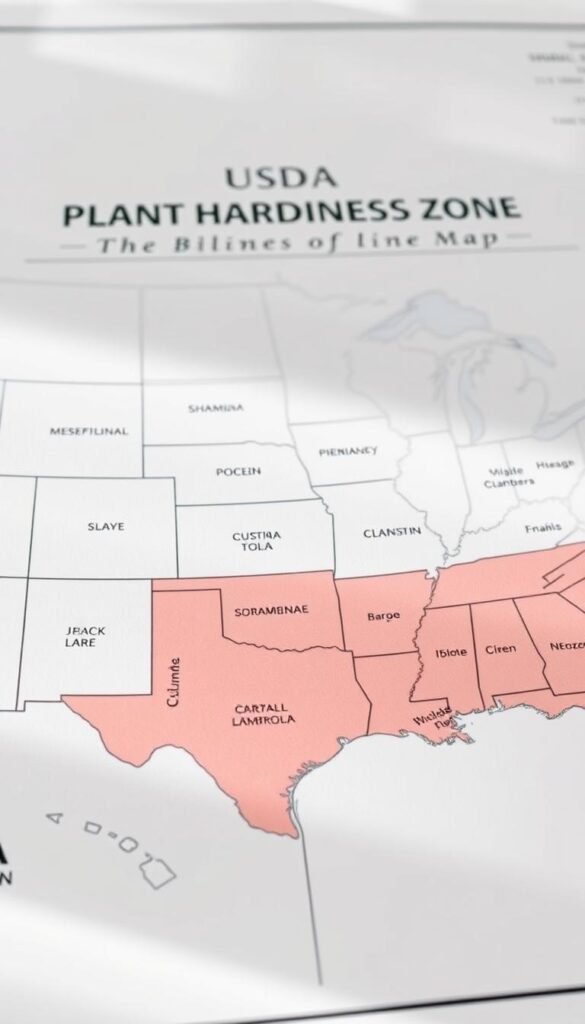
Knowing your garden’s unique conditions unlocks smarter winter care decisions. Start by mapping your location’s climate patterns against your plants’ natural resilience.
Identifying USDA Hardiness Zones
Your USDA zone acts like a plant survival roadmap. Find yours using the official interactive map—just enter your ZIP code. This number reveals average minimum winter temperatures, helping you match greenery to your area’s conditions.
Peppermint and chives thrive in zones 3-9, shrugging off frosty nights. Meanwhile, rosemary needs zone 8+ warmth. These boundaries aren’t absolute—microclimates in your yard might create pockets of slightly warmer or cooler air.
Evaluating Plant Tolerances in Your Area
Local weather quirks matter as much as zone numbers. Wind patterns and snow cover can boost or reduce cold resistance. Observe where ice forms last in spring—those spots often shelter tender roots best.
| Cold Tolerance | Zones | Examples |
|---|---|---|
| Extreme | 2-9 | Horseradish, Lemon Balm |
| Moderate | 4-10 | Sage, Lavender |
| Delicate | 8-11 | Basil, Lemon Verbena |
Elevate container-grown varieties in chilly regions. South-facing walls radiate residual heat, creating microclimates that let you push zone limits. Proper drainage prevents root rot during wet winters, giving plants their best shot at spring revival.
Preparing Your Soil and Mulching Techniques
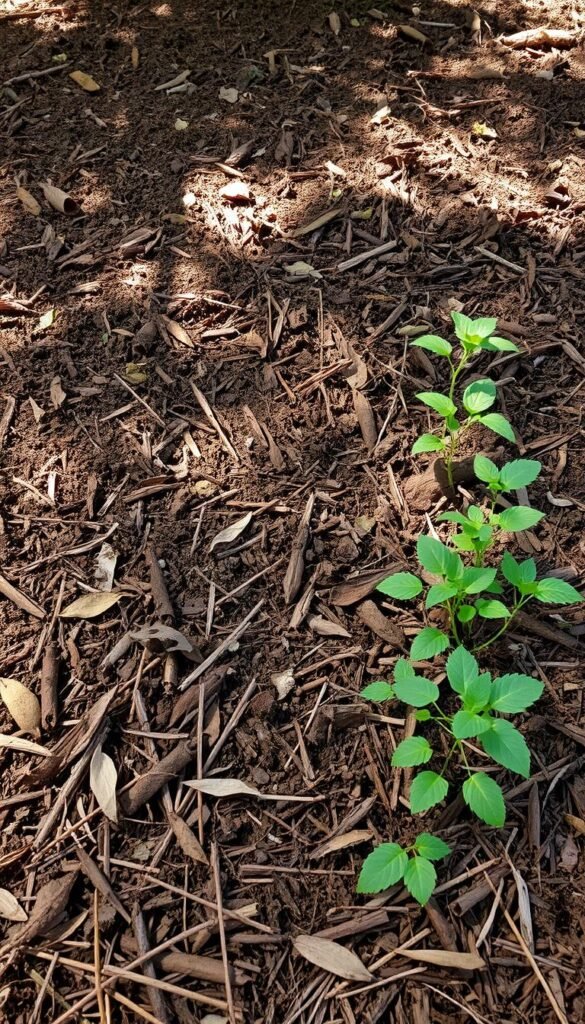
The foundation of thriving winter plants starts beneath the surface. Proper earth management shields roots from temperature swings and keeps moisture balanced. Let’s explore how to create ideal growing conditions through strategic soil prep and insulation.
Choosing the Right Soil Conditions
Most aromatic plants crave loose, crumbly earth with a pH of 6.0-7.5. Mediterranean varieties like lavender demand exceptional drainage—heavy clay soils often lead to root suffocation. If your ground feels sticky when wet, mix in compost or aged manure to improve texture.
Elevate planting areas in soggy yards, and avoid low spots where water pools. For container gardens, use pots with multiple drainage holes and gritty potting mixes. Pre-winter soil amendments give plants extra nutrients before dormancy sets in.
Effective Mulching for Insulation
Organic materials like straw or shredded bark create protective blankets for root zones. Spread 2-3 inches during fall, then boost to 6 inches after the first freeze. This layered approach prevents frost heave while allowing air circulation.
Be cautious with moisture retention—soggy mulch mats can invite mold. In rainy climates, opt for chunkier materials that dry quickly. Come spring, gently rake away thick layers to let new shoots breathe. Pair these techniques with indoor growing strategies for year-round greenery.
Overwintering Herbs: Keep Your Rosemary, Thyme & Mint Alive Year-Round

Every leafy friend in your garden has unique cold-weather preferences. Some shrug off snowstorms, while others demand cozy indoor retreats. Matching your approach to each plant’s natural resilience ensures they emerge healthy when spring arrives.
Custom Strategies for Popular Varieties
Rosemary thrives in zones 8-11 but hates wet feet. Improve drainage with gravel beds or raised planters. Shield roots with breathable burlap wraps during frost alerts. Container-grown plants often fare better when moved to sheltered patios.
Thyme handles zones 5-9 but varies by type. Creeping varieties tolerate colder temps than upright ones. Spread pine needle mulch around stems—it insulates without trapping moisture. Windbreaks prevent winter burn on silvery leaves.
| Plant | Zones | Winter Care |
|---|---|---|
| Rosemary | 8-11 | Drainage focus, wind protection |
| Thyme | 5-9 | Light mulch, airflow maintenance |
| Mint | 3-11 | Mulch crowns, limit watering |
| Sage | 4-10 | Prune early, gravel mulch |
| Basil | 10-11 | Indoor relocation pre-frost |
Mint survives nearly anywhere but hates soggy soil. Trim stems before snowfall and mulch lightly. Sage prefers dry conditions—wrap plants in breathable fabric during ice storms. Tender basil needs indoor relocation before nighttime temps dip below 50°F.
Perennial herbs like oregano bounce back stronger if protected properly. Annuals like basil require cuttings for continued growth. Observe each plant’s response to cold—slight leaf discoloration often means successful adaptation.
Protecting Your Herbs from Frost and Freeze
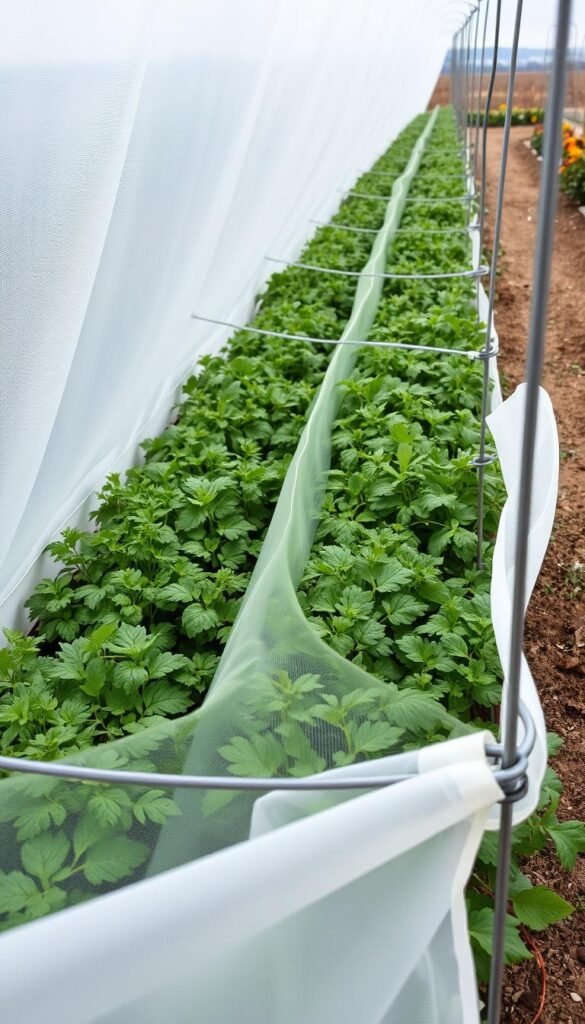
Unexpected frost can turn a thriving garden into a wilted mess overnight. With smart tools and timing, you’ll shield your plants while keeping maintenance simple. Let’s explore how to create invisible armor against icy threats.
Using Row Covers and Floating Sheets
Floating row covers act like cozy blankets for your garden. These lightweight fabrics trap heat while letting sunlight through. Wire hoops keep the material elevated, preventing direct contact with delicate leaves that could freeze to the covering.
Set up your covers when temperatures dip near freezing. For best results, combine them with hoop houses in areas with heavy snowfall. “The key is creating air pockets that buffer against sudden temperature drops,” notes one seasoned gardener.
Don’t forget ventilation! Open covers during sunny days to prevent overheating. Closed systems can cook plants faster than frost damages them. Use clamps or weights to secure edges against winter winds.
Windbreaks complement frost protection beautifully. Burlap screens or evergreen branches shield herbs like lavender from drying gusts. Position barriers on the windward side of beds for maximum effect.
| Herb | Wind Sensitivity | Protection Tip |
|---|---|---|
| French Tarragon | High | Double-layer burlap |
| Roman Chamomile | Moderate | Low evergreen fence |
| Winter Savory | Low | Single row cover |
Watch weather forecasts like a hawk. Have covers ready when fall temperatures swing wildly. Quick action preserves leaf quality and root health through nature’s coldest surprises.
Indoor Strategies for Frost-Sensitive Herbs
Not all greenery thrives outdoors when temperatures plummet. For tender varieties, moving inside offers a cozy refuge. Timing and technique determine whether these aromatic treasures flourish or falter until spring.
Optimal Relocation Timing
Act before the first frost kisses your garden. Basil and lemon verbena show stress quickly when nights dip below 50°F. Check extended forecasts—if chilly days loom, start transitioning plants. Potted specimens adapt best when moved gradually over 5-7 days.
Thriving Inside Your Home
Bright south-facing windows work wonders. Rotate pots weekly so all sides get light. Water only when soil feels dry two inches down—overwatering drowns roots faster than cold damages leaves.
Snip fresh cuttings from outdoor plants before relocating. Place stems in water near sunny spots. Once roots develop, transfer to pots with drainage holes. This backup plan ensures continuous growth if original plants struggle.
With attentive care, even delicate varieties like lemon verbena reward you with fragrant leaves through winter’s darkest days. A little effort now means fresh flavors at your fingertips year-round.

